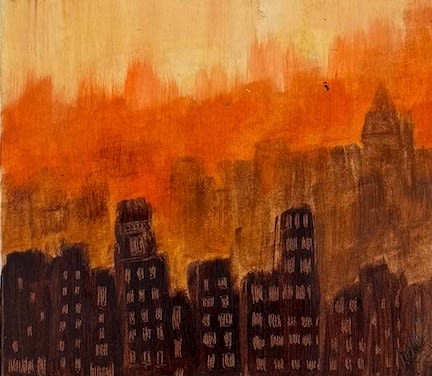Works for sale
Biography
Diana’s paintings are formed from layers. Layers in the landscape (of time and place), layers of materials (oil, cold wax, dry pigments, tissue paper collage) and layers of thought. They are deep paintings which recede into the distance into memory and the imaginal. They are not an imitation of nature but an expression of the landscape which in the Romantic tradition becomes an expression of the psyche, connecting both artist and viewer to the landscape.
The paintings often have the sense of looking through a window which encourages the sense of distance – of memory, of looking inward. They are both physical landscapes and inner, dream landscapes made of part real, part memory, part imagination and part dream. They move between the abstract and expressionism with a touch of the surreal in part.
The smaller paintings are jewel-like with earthy tones and subtle colouring, with striations and contours which attract the light. There is an innate structure and balance within the paintings, so that many when turned upside down retain the sense of proportion and form. It is easy to forget the paintings as landscapes and to see them as pure forms and universal shapes.
The simplified, recognisable natural forms become meditations in landscape form; their subject is the atmosphere, the fading light, the stillness of the day, the reflection of sunset or changing, brooding cloud. Often dictated by colour, the mood reverberates with the subconscious, reflecting and resonating with yearning or historical melancholy perhaps, or peace.
The paintings offer the romance of the remote, the sometimes sparse and the ancient. Diana has always been drawn to archaeology and the sense of time in a landscape. Sometimes she paints within her landscape standing stones which also become gravestones and dream portals to another world; sometimes a ring of stones, which is also a ruined medieval castle, with a small white cottage on the next hill. They are paintings of what Alfred Watkins called the ‘flood of ancestral memory’ in which time collapses and becomes all time as the landscape alters and changes but retains echoes of countless ages – the contours of time.
Join our mailing list
Be the first to hear about our upcoming exhibitions, events and news
* denotes required fields
We will process the personal data you have supplied to communicate with you in accordance with our Privacy Policy. You can unsubscribe or change your preferences at any time by clicking the link in our emails.









